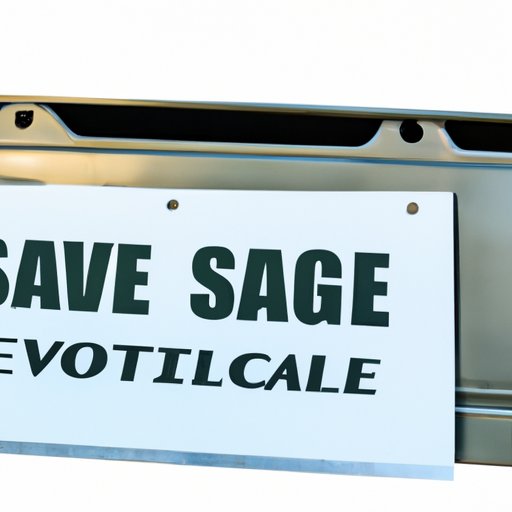
Introduction
When a car is classified as a total loss by an insurance company and the cost to repair it exceeds its value, it is given a salvage title. A salvage title indicates that the car has been damaged to the point that it is unfit for commercial use, and its value has been significantly diminished. If you’re looking to buy or sell a car with a salvage title, it’s important to have it cleared. This article will provide a comprehensive guide on how to get a salvage title cleared.
Prerequisite Conditions for Getting a Salvage Title Cleared
Before starting the process of clearing a salvage title, there are a few prerequisite conditions that must be met.
Ownership documents
The first prerequisite is ownership documents. You must have the current title of the car in order to clear the salvage title. If you do not have the title, you will need to obtain it before proceeding with the process.
Vehicle inspection report
The next prerequisite is a vehicle inspection report. Once you have the title, you will need to take the car to an authorized inspection station to obtain a vehicle inspection report. This report is necessary to determine the extent of the damage and whether the car can be deemed roadworthy after repairs have been made.
Evidence of repairs
You will also need to provide evidence of repairs made to the car. This includes receipts and invoices from repair shops, as well as an itemized list of all repairs made to the car. These documents will be reviewed as part of the clearing process to ensure that the repairs were done correctly and safely.
State-Specific Regulations for Clearing a Salvage Title
The process for clearing a salvage title can vary from state to state. It’s important to review the regulations specific to your state to avoid any ambiguity during the process. Many states have specific forms that need to be filled out and submitted to the DMV or a designated agent. Additionally, some states may require a salvage title to be held for a certain amount of time before it can be cleared.
Tips on Getting Necessary Repairs Done
Once you’ve met the prerequisite conditions and reviewed your state-specific regulations, it’s time to start making necessary repairs to the car.
Fixing safety issues
Priority should be given to fixing any safety issues with the car. This includes repairing brakes, airbags, seat belts, and any other safety features that are necessary for the car to be deemed roadworthy.
Obtaining proper documentation to prove repairs
When making repairs, it’s important to obtain the proper documentation to prove that the repairs were made by a licensed professional. This is necessary to ensure that the car is roadworthy and safe for use. Without proper documentation, the clearing process can be delayed or denied.
Providing evidence for work that was done
When submitting paperwork to the DMV or designated agent, it’s important to provide clear evidence for all work that was done to the car. This includes receipts and itemized lists of repairs made, as well as before and after photos of the car to show the extent of the repairs.
Getting the Salvage Title Cleared
Now that you’ve met the prerequisite conditions, reviewed your state-specific regulations, and made necessary repairs, it’s time to get the salvage title cleared.
Submit all necessary paperwork to the DMV or designated agent specified by your state. This may include the title, vehicle inspection report, and evidence of repairs made. Once the paperwork has been reviewed and approved, the DMV or designated agent will issue a new title for the car that does not include the salvage designation.
Conclusion
Clearing a salvage title can be a complex process, but by following the steps outlined in this article, it can be made significantly easier. Remember to review your state-specific regulations, obtain necessary ownership documents and vehicle inspection reports, make necessary repairs, and provide clear evidence for all work that was done. If you have legal questions or need help with the clearing process, it’s encouraged to consult a lawyer.
Key takeaways include obtaining necessary ownership documents and inspection reports, repairing safety issues first, obtaining proper documentation to prove repairs, providing clear evidence for all work done, and submitting all necessary paperwork to the DMV or designated agent specified by your state.




